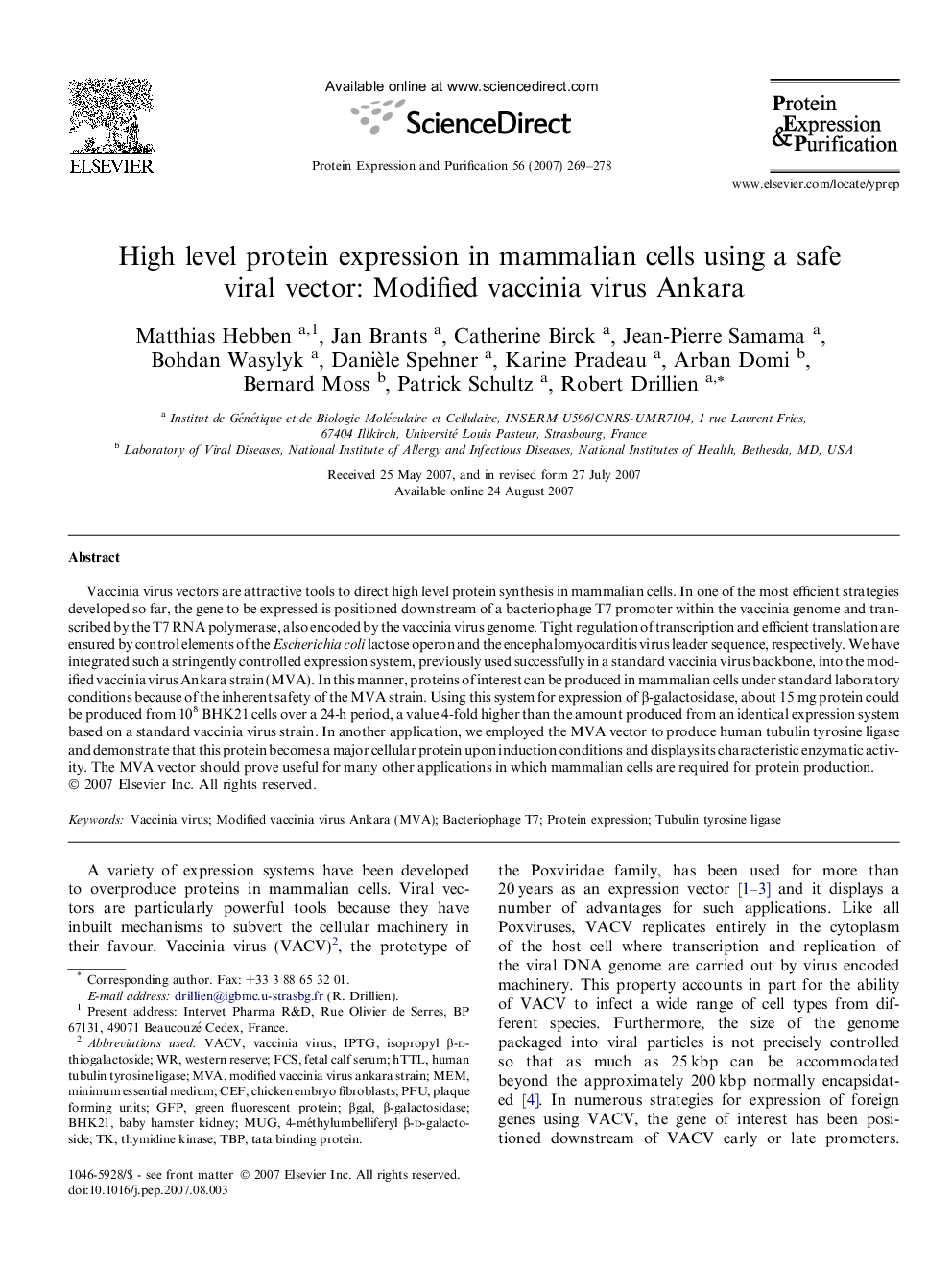| Article ID | Journal | Published Year | Pages | File Type |
|---|---|---|---|---|
| 2021752 | Protein Expression and Purification | 2007 | 10 Pages |
Vaccinia virus vectors are attractive tools to direct high level protein synthesis in mammalian cells. In one of the most efficient strategies developed so far, the gene to be expressed is positioned downstream of a bacteriophage T7 promoter within the vaccinia genome and transcribed by the T7 RNA polymerase, also encoded by the vaccinia virus genome. Tight regulation of transcription and efficient translation are ensured by control elements of the Escherichia coli lactose operon and the encephalomyocarditis virus leader sequence, respectively. We have integrated such a stringently controlled expression system, previously used successfully in a standard vaccinia virus backbone, into the modified vaccinia virus Ankara strain (MVA). In this manner, proteins of interest can be produced in mammalian cells under standard laboratory conditions because of the inherent safety of the MVA strain. Using this system for expression of β-galactosidase, about 15 mg protein could be produced from 108 BHK21 cells over a 24-h period, a value 4-fold higher than the amount produced from an identical expression system based on a standard vaccinia virus strain. In another application, we employed the MVA vector to produce human tubulin tyrosine ligase and demonstrate that this protein becomes a major cellular protein upon induction conditions and displays its characteristic enzymatic activity. The MVA vector should prove useful for many other applications in which mammalian cells are required for protein production.
